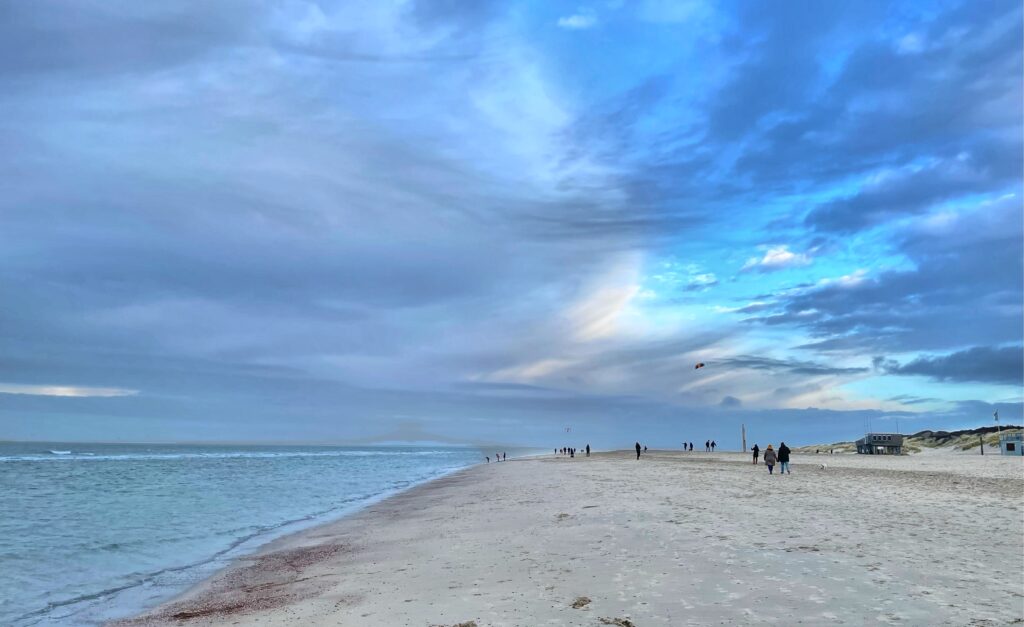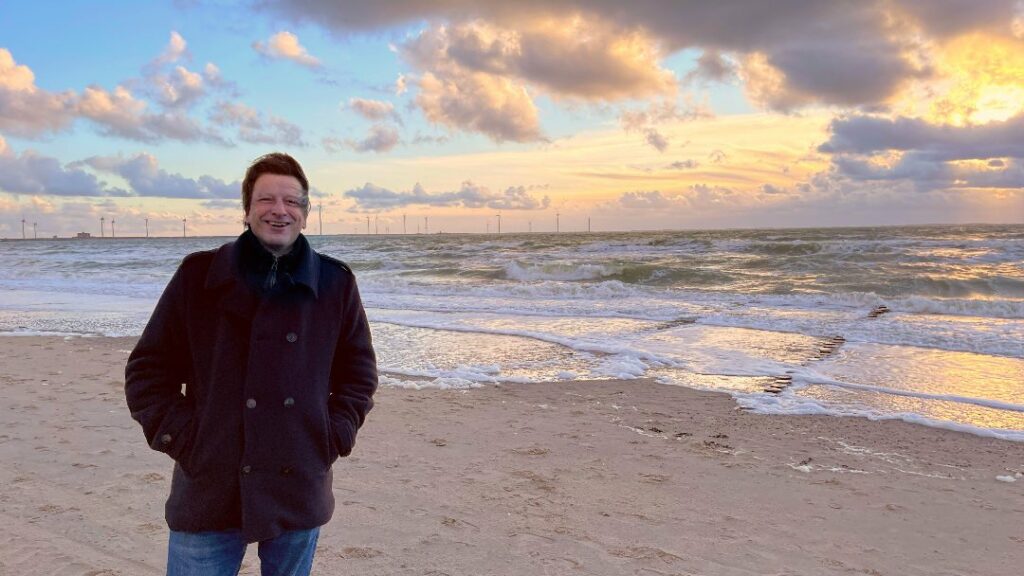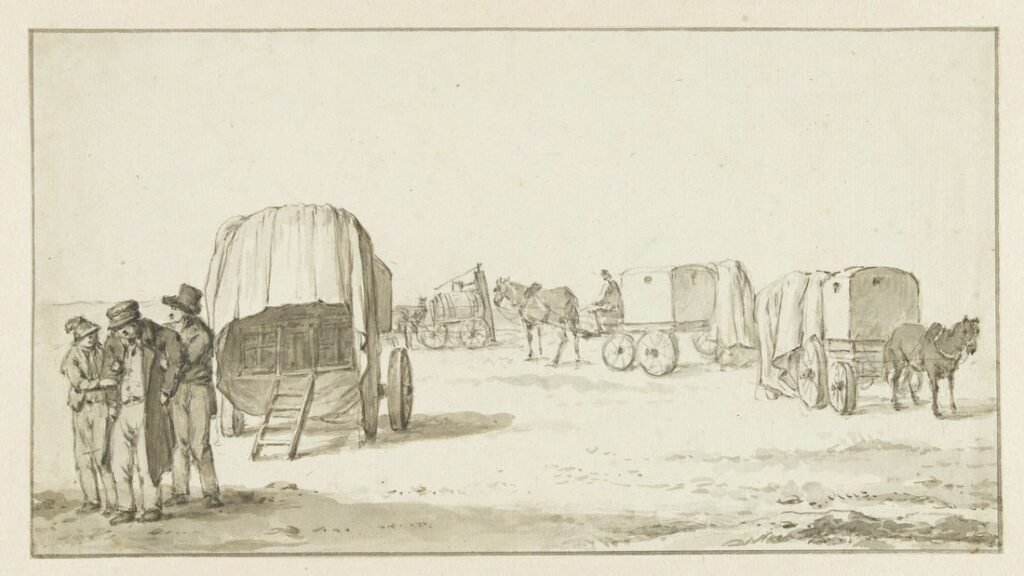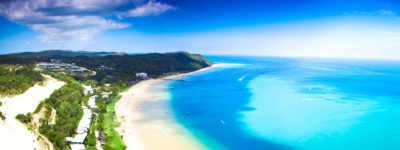The Island I Call Home
Editor’s Note: Alex Verbeek shares his take on what it’s like to walk his homefront beaches on the coast of a small island in the Netherlands, in the Province of ZEELAND and the island of Schouwen-Duiveland Here are his impressions, from his New Year’s Day walk that has become a family tradition.
I have started each New Year with a long walk on the beach for as long as I can remember. For me, this walk is a New Year’s tradition, just like drinking champagne and eating “oliebollen” the night before. The “oliebollen” is a Dutch tradition created with a dough, hot oil and then filled with raisins. First, you must dip two tablespoons into hot oil. Then you use them to form small balls of dough mixed with raisins. Once you drop these balls into the hot oil, they quickly sink to the bottom but then resurface. Fry them until they are golden brown and top each with sprinkling of powdered sugar. I suppose this recipe makes you want to exercise the following day.

The picture shows the most crowded part of the 13-mile (21-kilometer) beach of the island Schouwen-Duiveland in the Netherlands; there are only about a dozen people, most of them with their dogs. Had I come at another time of the day, I would have had the beach even more to myself because it gets much wider at low tide. But now, the water is so high that the nearby sand bar with its many seals is entirely underwater.
I often write about this island. I love its beaches, dunes, and vast landscapes, combined with the island’s fascinating history and its centuries-old villages. Most visitors to the Netherlands only see Amsterdam and perhaps a few sights in the Western regions. This is unfortunate. There is so much more to explore in this small beautiful country that is not much bigger than Maryland; There are charming cities, fascinating museums, and everybody speaks English. Everywhere, there is beautiful nature. The best part is that everything is easy to reach in this largely flat country with excellent public transport. Travel Tip: To make your visit a truly personalized Dutch experience, rent a bicycle to explore and you can see even more.

Island History + Culture
A hundred years ago, Pieter Telle received the monopoly for renting out ‘bathing machines’ that changed the way people experienced ‘sea bathing’. These walled wooden carts rolled out into the sea to allow people to change into swimwear before wading into the water. These devices were trendy in Victorian Britain where men and women were segregated at the beach according to the conventions of the day. Queen Victoria owned a bathing machine (as you might imagine). You can visit this contraption at the Osborne Beach on the Isle of Wight. I doubt if Telle ever made use of this monopoly on the island of Schouwen-Duiveland. By 1925 nobody was interested in making use of these carts. The birth of the “Fashionable Set” swimming on the beaches of coastal France (Deauville) or the Riviera (Cannes) all sported Coco Chanel’s new knitted bathing costumes, the sign of the changing times. The last summer that Telle’s pavilion opened to the public was in 1939. A year later, Nazi Germany occupied the Netherlands taking away access to the beaches. A few years later, the western part of Schouwen became part of the Atlantic Wall. There are dozens of bunkers are still reminding visitors of the relics of war built to protect against a potential invasion.
The Beaches Today

The beaches are quiet now and mainly visited by nature lovers. The nearby village becomes more lively during the summer months. I’m glad that no modern startup has thought about re-introducing this “Beach Trolley” though perhaps a modernized version complete with wifi, loudspeakers, and a minibar might appeal.
The Rise of our Seas
The history of the province of Zeeland is one of defending the land against the sea; sometimes, we won, but often we lost; land, homes, and many lives. The people in Zeeland do feel safe behind the best dikes in the world but they still fear the long term consequences of sea level rise of our changing planet. We have the best technologies in the world to defend against the sea, and these fascinating waterworks are well worth a visit. The Maeslant barrier is, for instance, a colossal storm barrier that closes when floods threaten the port of Rotterdam. Picture it as two horizontal Eiffel Tower size structures that can shut down the entire with (360 meters, 1180 feet) of the main waterway to Rotterdam. It is one of the largest moving structures on earth. But, like so many other coastal areas in the world, the long-term future is uncertain.
Considering the Oceans and Shores
If we don’t rapidly reduce the greenhouse gas emissions, the melting polar ice caps will raise the sea level, and this risks reaching a point that strengthening the sea defences won’t work anymore. I have visited the island for as long as I can remember; yet it is only in the past few years this thought regularly plagues my mind as I walk these beautiful beaches. We don’t need more reasons for transforming our energy and land use; but if you look for just one more, walk on this magnificent beach to see what is at stake.
I often write and talk about the island and sea-level rise, for instance, in this article in The Planet newsletter and this podcast.
Editor’s Note: Holiday Recipe for the Oliebolen





